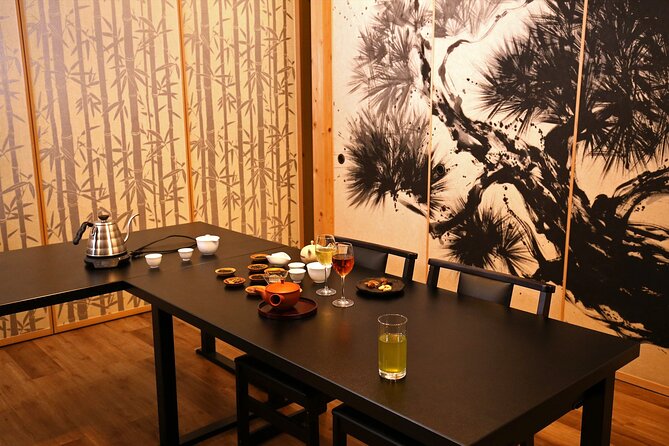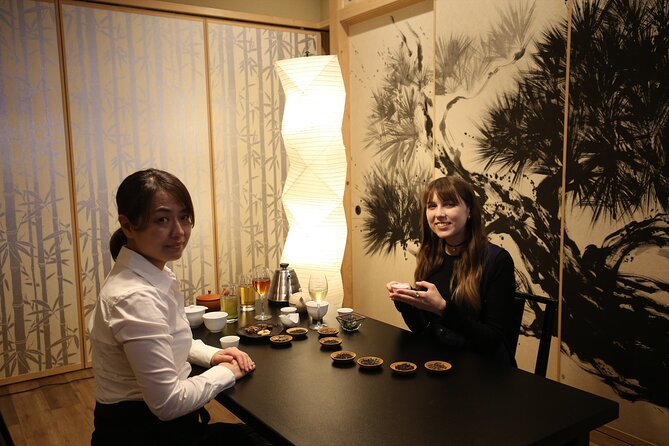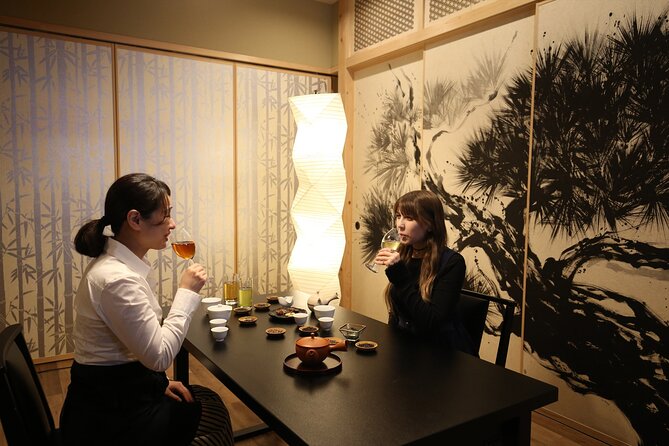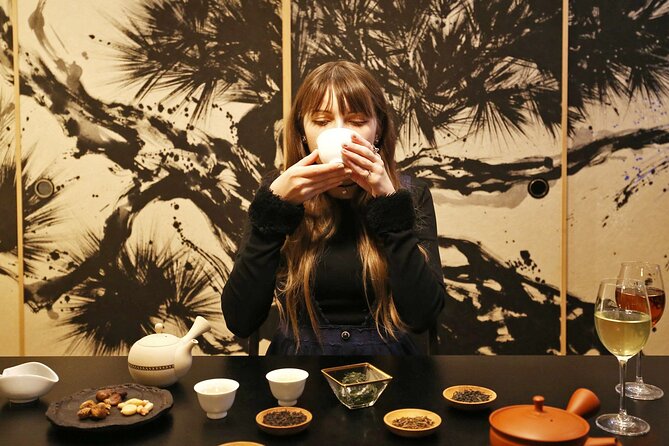Did you know that Japan is the ninth-largest tea producer in the world, with a long history deeply intertwined with tea culture?
Imagine immersing yourself in a tea tasting experience that unveils the nuances of seven distinct Japanese teas, each with its own story waiting to be sipped.
From the vibrant notes of Matcha to the toasted aroma of Hojicha, this exploration promises a sensory adventure like no other.
Join the discussion to uncover the secrets behind these seven kinds of Japanese tea and discover why this tasting experience is a must-try for tea enthusiasts and curious minds alike.
Key Takeaways

- Japanese teas like Sencha, Gyokuro, Genmaicha, and Hojicha offer diverse flavors and health benefits.
- Green tea and matcha are versatile choices for a rich antioxidant boost and enhanced brain function.
- Enjoy a unique tasting experience with Japanese teas rich in history and cultural significance.
- Explore a range of Japanese teas for a balanced mix of flavors, antioxidants, and health benefits.
Green Tea

Green tea, a staple in Japanese culture, is renowned for its earthy flavor and numerous health benefits. Packed with antioxidants, green tea is known to boost metabolism, improve brain function, and lower the risk of various diseases.
When it comes to brewing techniques, it’s essential to pay attention to water temperature and steeping time to bring out the best flavors. To maximize the health benefits, it’s recommended to brew green tea at around 175°F to 185°F for 1 to 3 minutes.
Whether you prefer it hot or cold, green tea is a versatile and refreshing beverage that can be enjoyed throughout the day. Incorporating this simple yet beneficial drink into your routine can positively impact your overall well-being.
Matcha

Often enjoyed in traditional Japanese tea ceremonies, matcha is a vibrant green powdered tea that offers a unique and rich flavor experience. Matcha is known for its numerous health benefits, such as being high in antioxidants, promoting relaxation, boosting metabolism, and enhancing concentration.
Additionally, matcha is a versatile ingredient that can be used in various recipes beyond traditional tea preparation. Some popular matcha recipes include matcha lattes, matcha smoothie bowls, matcha ice cream, and matcha pancakes. By incorporating matcha into different dishes, one can enjoy not only the distinctive taste but also the potential health advantages this green tea powder offers.
Whether sipped as a warm beverage or incorporated into delicious treats, matcha is a delightful and beneficial addition to any tea tasting experience.
Sencha
Sencha, a popular Japanese green tea variety, offers a refreshing and grassy flavor profile that’s distinct from the vibrant matcha tea often associated with traditional tea ceremonies.
Here are some interesting facts about Sencha:
-
History: Sencha dates back to the 18th century and is one of the most consumed teas in Japan.
-
Health Benefits: Rich in antioxidants, Sencha is believed to boost metabolism and promote overall well-being.
-
Varieties: There are various grades of Sencha, ranging from everyday blends to high-quality leaves for special occasions.
-
Preparation: To brew Sencha, use water below boiling point to avoid bitterness and steep the leaves for around 1-2 minutes for optimal taste.
Sencha not only offers a delightful tea experience but also provides numerous health benefits for tea enthusiasts.
Genmaicha
With its unique blend of green tea leaves and roasted brown rice, Genmaicha offers a nutty and toasty flavor that sets it apart from other traditional Japanese teas. Genmaicha brewing techniques involve steeping the tea in water around 176°F for 1-3 minutes to bring out its full flavor. This tea is known for its health benefits, including being rich in antioxidants, aiding digestion, and providing a source of energy without the jitters. Here’s a simple table to showcase the charm of Genmaicha:
| Genmaicha Appeal | Emotion Evoked | Reason |
|---|---|---|
| Nutty Flavor | Comfort | Reminiscent of a warm, cozy atmosphere |
| Toasty Aroma | Nostalgia | Brings back memories of homemade treats |
| Health Benefits | Wellness | Promotes a sense of vitality and balance |
Hojicha

Hojicha, a roasted green tea popular in Japan, offers a unique smoky flavor profile that distinguishes it from other traditional Japanese teas. This tea undergoes a high-temperature roasting process, which gives it a toasty aroma and a reddish-brown color. Here are some key points about Hojicha:
-
Roasting Techniques: Hojicha is made by roasting bancha or sencha leaves at high temperatures, typically around 200°C. This process creates the tea’s characteristic nutty and caramelized flavors.
-
Health Benefits: Due to the roasting process, Hojicha has lower caffeine content compared to other green teas, making it a suitable choice for those looking to reduce their caffeine intake.
-
Flavor Profile: The roasting of Hojicha results in a smooth, mellow taste with a hint of smokiness, making it a comforting and easy-to-drink tea.
-
Versatility: Hojicha can be enjoyed hot or cold, making it a versatile beverage for different occasions.
Gyokuro
Gyokuro, a prized shade-grown Japanese green tea, offers a rich and umami-packed flavor profile that sets it apart from other varieties. This tea is cultivated with meticulous care using unique techniques that involve shading the tea leaves before harvest, enhancing its savory taste.
Exploring Gyokuro’s flavor profiles reveals a complex, vegetal sweetness with a hint of seaweed-like richness, making it a favorite among tea connoisseurs. The tea bushes are shielded from direct sunlight for about three weeks before picking, which increases the chlorophyll content and reduces bitterness, resulting in a smooth and delicate brew.
Gyokuro’s cultivation methods contribute to its distinct taste, making it a premium choice for those seeking a luxurious tea experience.
Bancha
Bancha, a popular Japanese green tea, is known for its unique flavor and affordable price point. Here are some key points about Bancha:
-
Traditional Brewing: Bancha is best brewed using hot water at around 80°C for a shorter time to avoid bitterness.
-
Health Benefits: This tea is rich in antioxidants and has low caffeine content, making it a good choice for those looking for a milder option.
-
Budget-Friendly: Bancha is often considered a budget-friendly tea option, making it accessible to a wide range of tea enthusiasts.
-
Versatile: Bancha can be enjoyed hot or cold, and its mild taste makes it a versatile choice for various occasions.
Frequently Asked Questions
Are There Any Age Restrictions for Participating in the Japanese Tea Tasting Experience?
Age restrictions do not apply to the Japanese tea tasting experience, ensuring all can partake in the cultural significance of the event. Embrace the opportunity to explore the world of Japanese tea without limitations or boundaries.
Can Participants Purchase the Japanese Teas and Sweets Tasted During the Experience?
Yes, participants can purchase the Japanese teas and sweets tasted during the experience. They have tea purchasing options and sweet availability, making it easy to bring home souvenirs or enjoy a tasting takeaway.
Is There a Dress Code or Any Specific Attire Recommended for the Tea Tasting Session?
There is no specific dress code for the tea tasting session. Participants can wear comfortable attire. Tea accessories are provided during the experience. Enjoy the casual and budget-friendly atmosphere while exploring the world of Japanese tea and sweets.
Are There Any Special Precautions or Considerations for Pregnant Participants During the Tea Tasting?
For pregnant participants during the tea tasting, safety measures include comfortable seating and breaks as needed. Health concerns are addressed by providing water and accommodating dietary restrictions/allergies. True Japan Tour ensures a pleasant experience.
Can Participants Bring Their Own Tea Accessories or Are They Provided During the Tasting Session?
Participants can bring their own tea accessories to the tasting session. Provided accessories are also available for those who need them. Enjoy the experience fully with personal or provided items in this immersive tea tasting adventure.
Conclusion
Overall, the 7 kinds of Japanese tea tasting experience in Tokyo offers a budget-friendly opportunity to explore the rich traditions of Japanese tea culture.
With a variety of teas to sample and traditional sweets to enjoy, participants can immerse themselves in a sensory journey that fosters community and cultural exchange.
From the tranquil ambiance to the distinct flavors, this experience is sure to leave a lasting impression on all who attend.
